Dr Nina Krüger presents this factual article on the little-known social structure of wild boar and the best way of managing and culling them
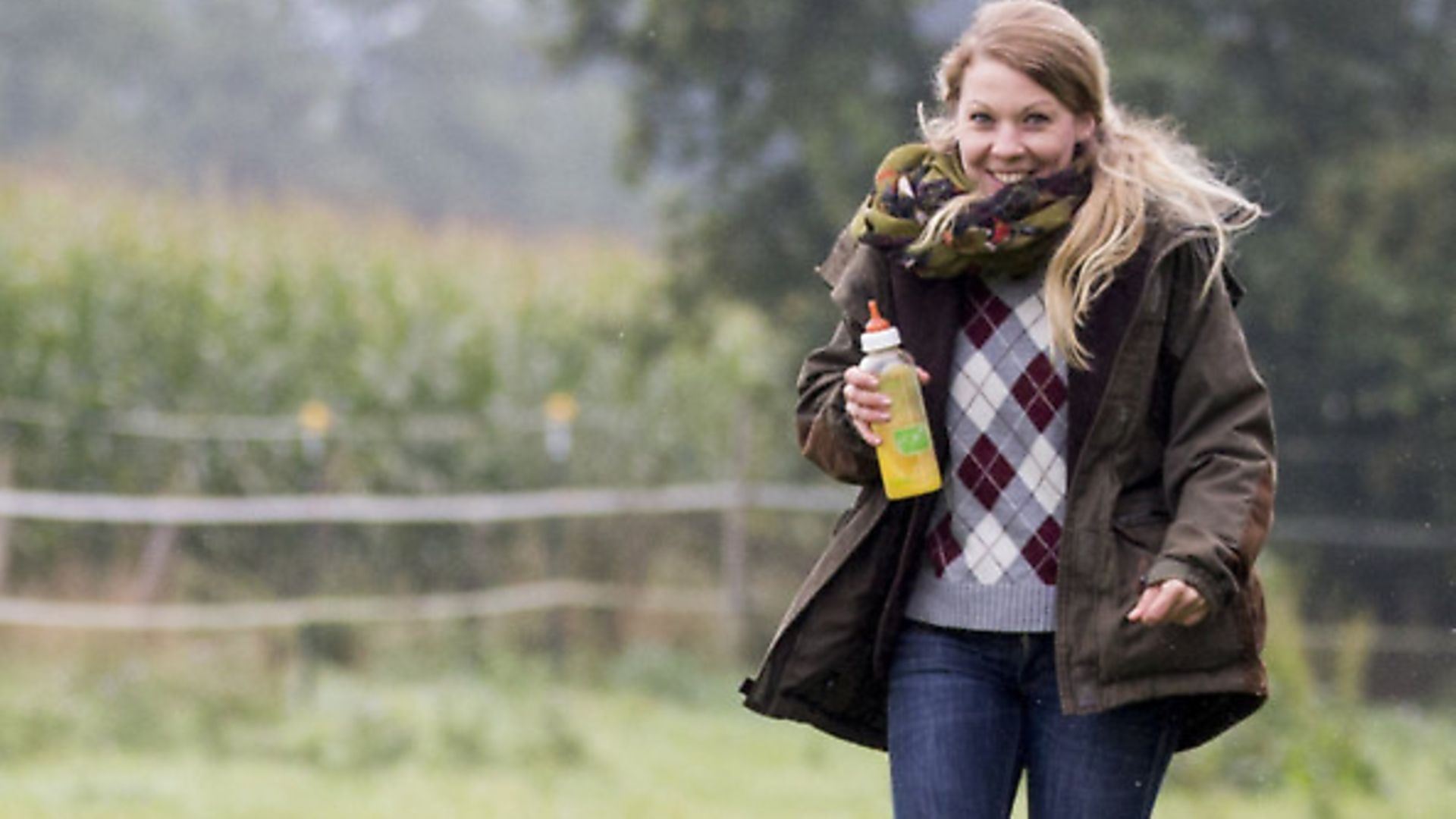 credit: Archant
credit: Archant
Rising bag numbers in Europe and, finally, in the UK (where they had been extinct for 300 years) have long confirmed that there are more wild boar in our forests and fields than ever before – over 1,000 feral pigs are estimated to be roaming the Forest of Dean today.
To successfully manage a game species – especially if it has been absent from the ecosystem for a significant length of time – it is fundamental to understand its habits, needs and population dynamics. Pigs, like humans, are omnivorous animals. Not only do they like the same things we do, they are also often found close to human structures, farms and fields were they can cause substantial damage to agriculture.
The UK now has main colonies in Kent/East Sussex, Dorset/Devon and the Forest of Dean, with reports of further releases and sightings in areas of Wales and Scotland. In 2008, the Forestry Commission estimated a population of 90 wild boar in the Forest of Dean. To control the numbers, 38 of them were culled. The situation quickly spiralled out of control; last year, despite increasing the yearly cull number to 550, the population grew to well over 1,000 animals, with an annual growth rate of 300%. It is clear that the damage to land, a couple of hundred car accidents and the goal to establish a target population of 400 animals makes population management inevitable, but apparently recent approaches haven’t been very successful. So, why are boar populations so difficult to control?
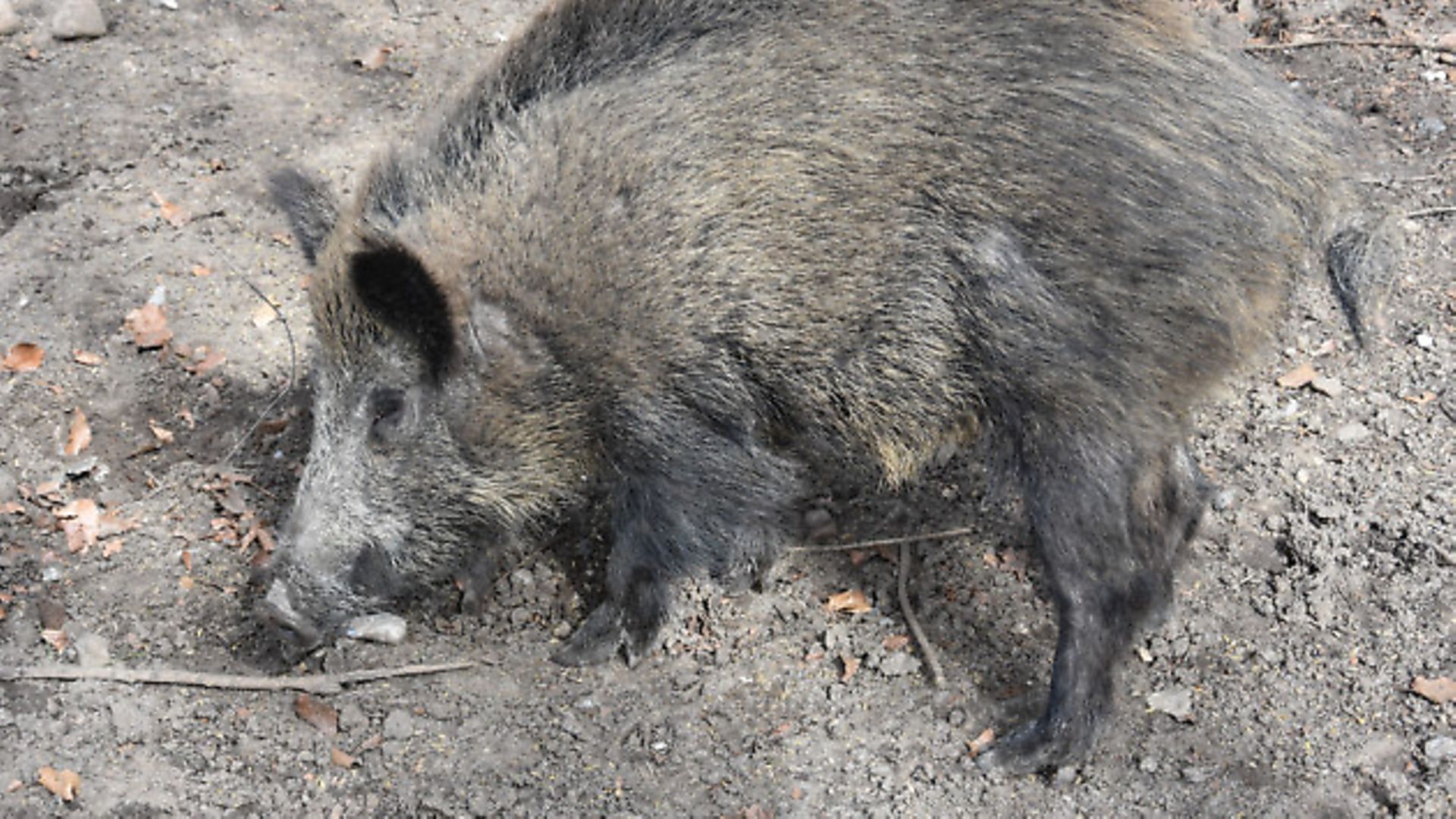 credit: Archant
credit: Archant
Breeding like pigs
Nobody would have believed this 25 years ago, but 520,880 wild boar were shot in Germany last season. That is a 70% increase in bag numbers, compared to those recorded before the reunion of East and West Germany, in 1989. With a momentary growth rate of 260% per annum, the population is rapidly expanding into new habitats; they are even venturing into altitudes over 1,000m above sea level, into the alpine mountains in Austria and France, which was an absolute rarity a few decades ago but is now a common sight. According to a study published last year by the University of Veterinary Medicine in Vienna, this cannot be accounted for solely by the alleged and forbidden feedings of overambitious hunters, nor by the exuberant corn cultivation in Germany. The climate change seems to be the main drive for the rising bag numbers of the last years, which are expected to reach a new record high this season, with over 600,000 head shot.
The Austrian study concludes that, independent of all previous attempts to explain population growth of wild boar, it is the milder winters and more frequently available natural food which are responsible for the rapidly growing numbers. Mortality due to cold winter conditions and absence of feed consequently declines. Therefore, even frischlinge (youngsters of 0-12 months of age) manage the high energetic costs of body temperature regulation during winter, and the adult animals have enough reserves available to reproduce more successfully. Compared to the infinite amount of feed available in full mast years, produced by oak and beech trees, any human feeding is negligible. The finding that ‘population growth rates in areas with intense cultivation of corn do not differ from areas with extensive agriculture’ was a surprise for the researchers.
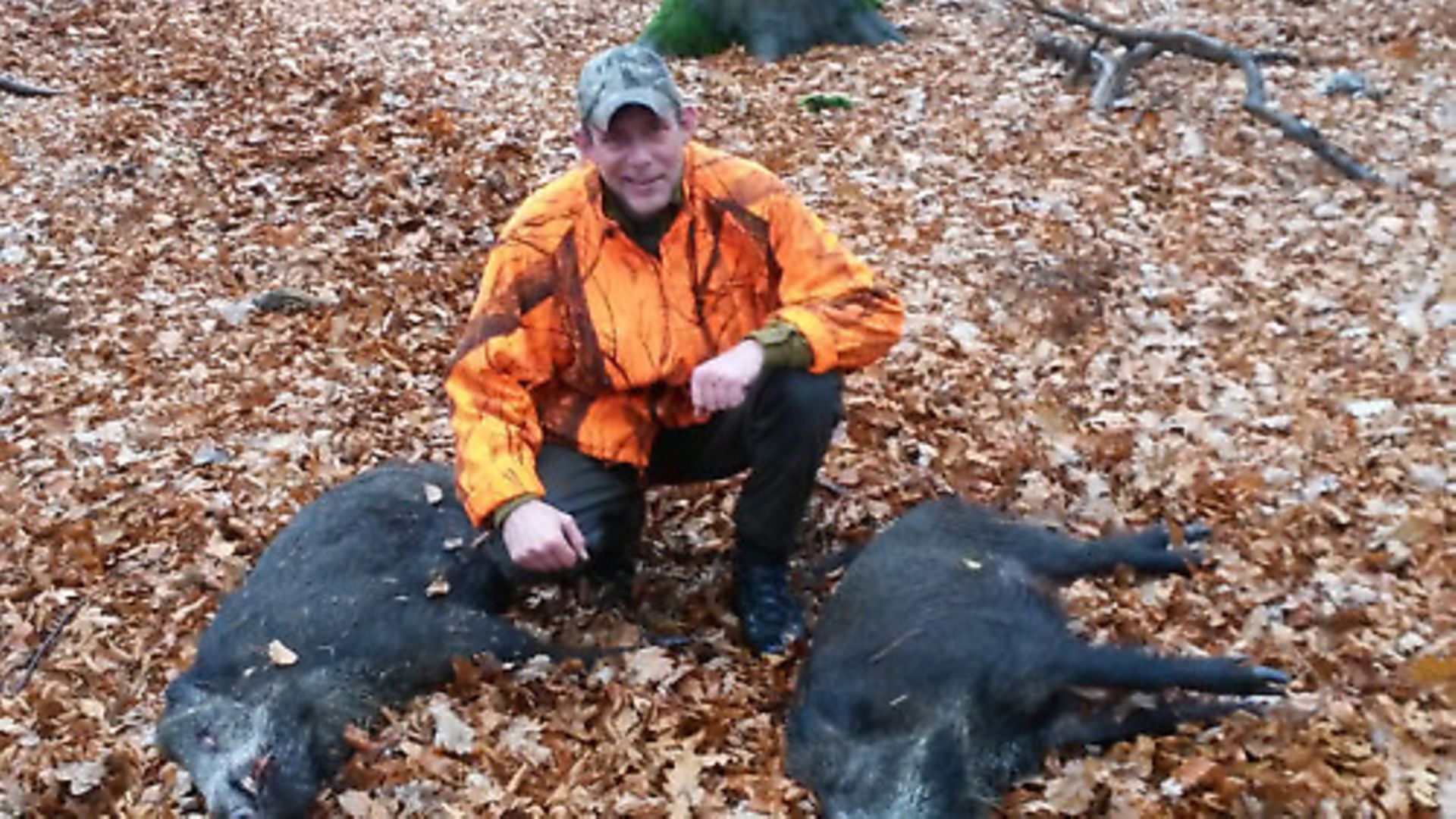 credit: Archant
credit: Archant
Climate driven
Many species have been studied in order that we can learn about their ability to adapt to changing climate conditions. Wild boar are very interesting model organisms for such studies – they are easy to investigate because many countries observed growing populations, and wild boar inhabit a variety of landscapes and habitats, which are directly influenced by climate change. Additionally, it is known that climate influences the reproduction and survival of wild boar. Not only that, but the availability of feed has a great influence too, and is mostly dependent on climate conditions.
Wild boar are very sensitive to lower temperatures; harsh and long winters are always followed by lower bag numbers the following years, reflecting the decline of the population. The reason is the high mortality of frischlinge, which mainly influence the population dynamics. Even if previous studies showed that hunting practices and management have significant influence on the demographic distribution of a population, no study so far has confirmed that hunting pressure has an effect on the growth rate itself. Some studies are believed to show that, in regions with high hunting pressure, females start to reproduce more frequently in the year of their birth. So far, it has been confirmed that food availability and social structure influences sexual maturity and rutting behaviour, but no scientific survey to date has been able to answer this question: is a more rapid population growth the result of hunting pressure, or is it actually the reverse result?
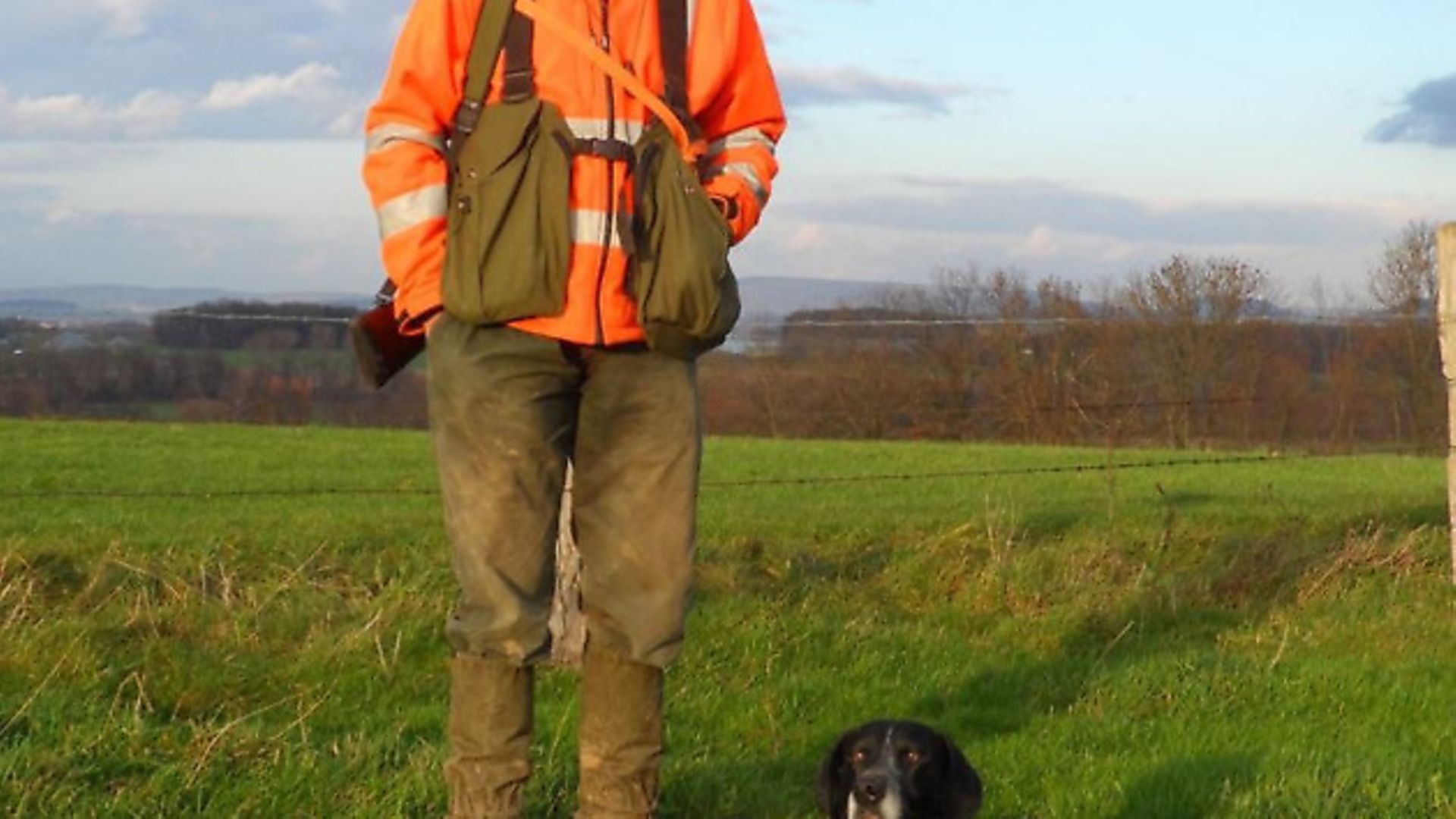 credit: Archant
credit: Archant
Social structure and population dynamics
Although hunting strategies have no significant influence on the population growth rate, they can have a huge impact on the social structure and behaviour, and consequently on the damage done by this species.
Wild boar are classified in three age groups: frischlinge (0-12 months); überläufer (13-24 months); bachen (females >25 months); and keiler (males >25 months). They live in relatively stationary social structures – known as sounders – based around female groups of six to 30 individuals consisting of several generations of adults and their offspring. These groups are matrilineal (based on kinship with the mother or the female line) and led by the most mature breeding female. All members of intact sounders are related to each other to some extent, and unrelated individuals are normally not tolerated. This social grouping is an advantageous driven structure influenced by shelter, feed availability, predators and population density. When the costs of remaining in the group exceed its advantage, the sounder breaks apart and re-establishes in new habitats.
Male boar leave the sounder in the year following their birth, after the post-weaning phase, and often roam in bachelor groups. In populations with intact social structures the rut takes place in winter between late November and January. Mature males are fighting during this time over the right to reproduce, and young males rarely get the chance to participate. As opposed to deer species, the onset of the rut is not related to day length, and a female boar can, in theory, come into oestrus every three weeks if not fecundated. After a gestation time of three months, three weeks and three days, litters are usually born between February and April. Litter sizes vary between one and 12, depending on the feed situation and age of the female in question. For a long time it has been believed that the leading female of a group determines the onset of the rutting season and, after their second year, all females of favourable body condition come into oestrus within a few days. It’s still a controversially discussed topic, but scientific studies show that the overall body condition has a great influence as well. Potentially, wild boars become sexually mature when they reach a certain threshold weight of 30–35kg, at the age of 10 months or older.
Wild boar have an exceptional position among Europe’s wild ungulates, because they can have large litters in one year, of which several or all can be female. Therefore, sizes of family groups can increase rapidly, but they are not growing to infinite numbers; depending on the age structure of the group, approximately one third of the females born in one year will leave their birth groups after weaning, and establish a new group with their sisters and cousins. It is interesting to note that all überläufer (13 to 24-month-old females) of the same sounder behave in the same way: they either stay with their mothers or leave the group. In groups with a greater number of older females and a high ratio of female offspring, the probability of young females leaving the group is higher than in those with several primiparous sows (those bearing offspring for the first time). There are two reasons for this. Firstly, older sows are more likely to give birth early in the year, giving their offspring more time to reach sexual maturity before the onset of the rut. Younger mothers often give birth later, and have a stronger post-weaning connection to their daughters, which remain in their birth group and are more likely to reproduce in their second year rather than in the year of their birth.
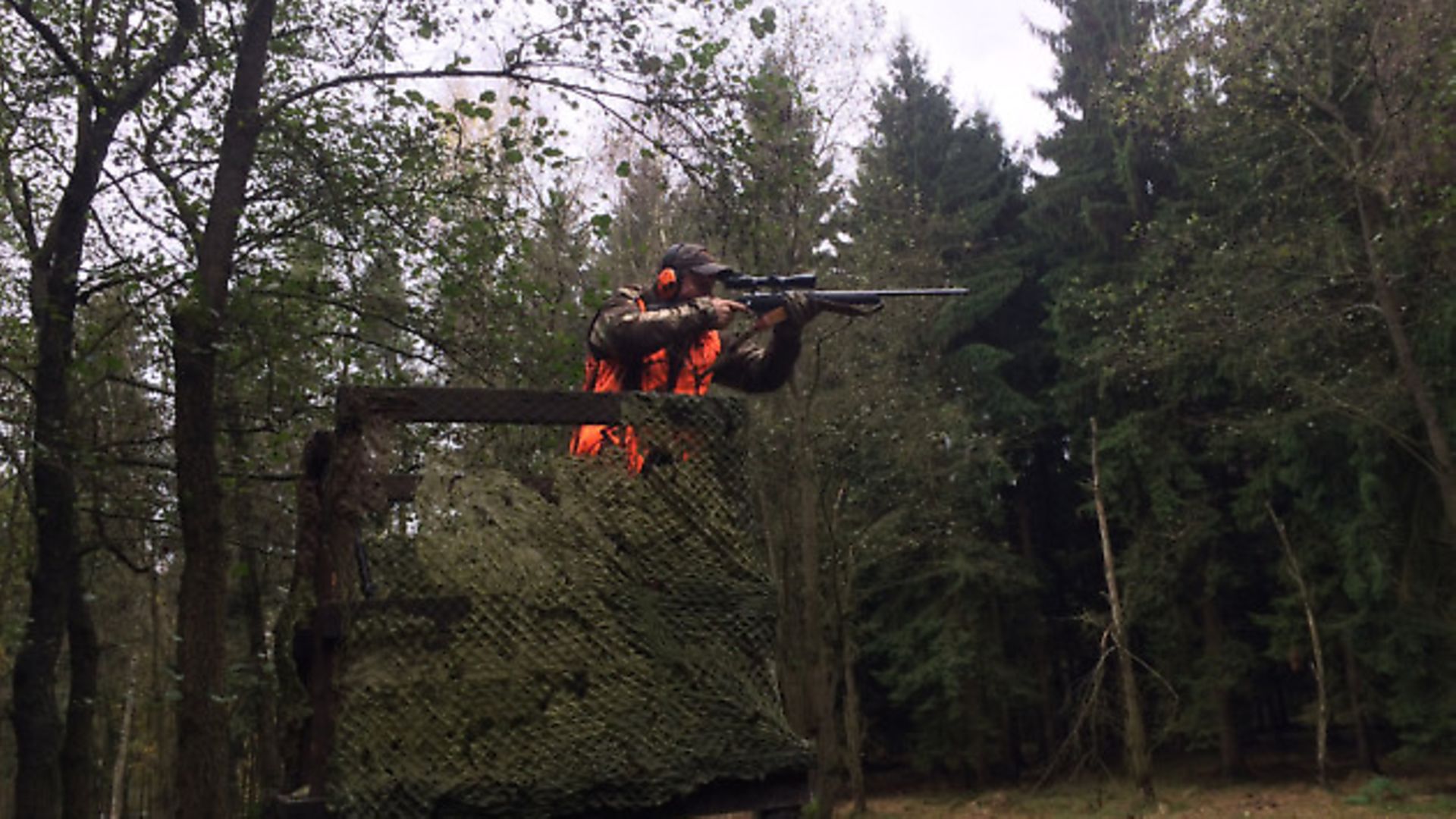 credit: Archant
credit: Archant
wrong management causes damage
Coming to the conclusion that the best way to control population growth and size is to cull leading females is, however, wrong. The social behaviour of wild boar depends on mature, experienced females that know where to find food and shelter for the group. These groups, like solitary mature keilers, are more or less sedentary. That makes them easy to predict; they can be distracted and led away from damaging fields by small amounts of feed on baiting sites. However, bad management over decades has led to an increase of conflicts between human land use and wild boar requirements, in many European countries. The indiscriminate shooting of all age classes and both sexes has disrupted sounder structures and dropped the average age of the population to 1.6 years. When you imagine a group of teenagers and young adults leading a country, you can understand why this is bound to cause trouble. Without guidance and a synchronised life routine, more young females participate in reproduction, and can contribute to yearly population growth by 85%. Ethical hunting becomes more difficult when even the youngest already have offspring in tow – all year round. It is an undeserving situation for this highly intelligent and challenging game to be seen as a pest in some areas, and hunted like vermin, without understanding the fundamental needs of the species.
In many areas, wild boar have turned completely nocturnal – the first sign of overambitious management or semi-optimal hunting practice. This happens when a population is permanently disturbed by human activities, including hunting, and when leading and experienced females are shot on first sight, especially when they have dependent offspring. Once the social structure is destroyed, it is difficult to predict where and when the remaining family members will reappear, and hunting becomes very challenging. Young and inexperienced individuals tend to cause more damage to fields, roam larger areas and, worst of all, start breeding out of season. This is caused by two phenomena: firstly, young females have no synchronised cycle with older family members, and come into oestrus as soon as they reach the threshold weight; secondly, when not enough mature keilers are present to cover receptive females, they keep cycling until they finally become impregnated.
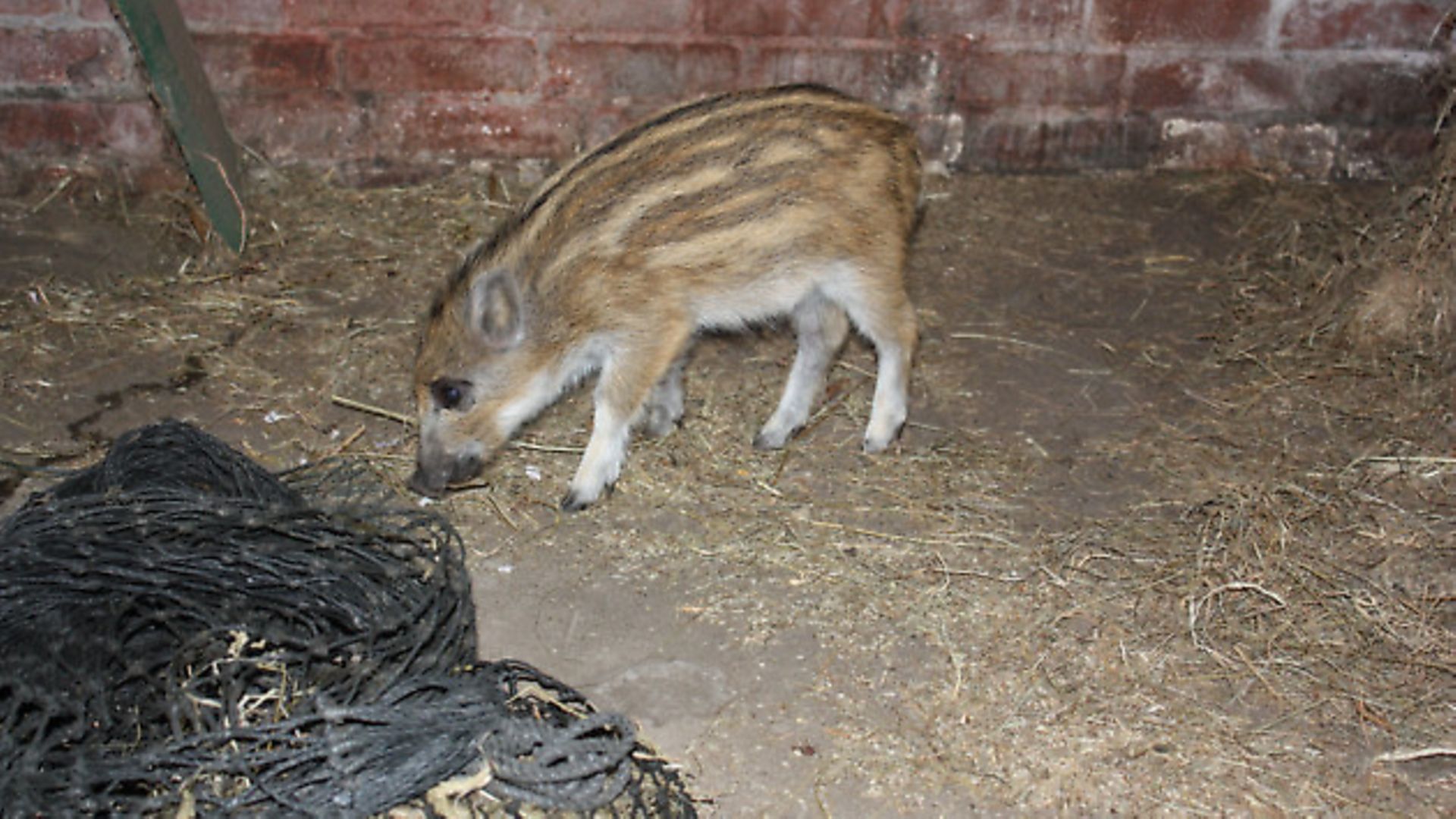 credit: Archant
credit: Archant
The Lübecker Modell
It is understandable that, in areas with high conflict, there is pressure on the hunters, but shooting pigs regardless of age and sex is not the solution to this problem. In the 1970s a group of experts and scientists established the Lübecker Modell, to successfully control and ethically manage wild boar populations with the goal of harvesting old keilers – something every boar hunter dreams of. It has been shown many times since that areas keeping to the principals of this model have healthier distributions of age classes, less damage, and a sustainable harvest of boar.
The main cull concentrates on frischlinge; they should account for 70% of the total harvest. They are easiest to distinguish – first with stripes, later with a much lighter colour than the überläufer and adults. Therefore, main hunting should be conducted between July and February. From November, single adult females can be shot but should not amount to more than 5% of the total harvest; leading sows should always be left alone. During summer, animals over 50kg should be generally spared. From groups, the smallest and weakest animal is always the first target of choice. Überläufer of both sexes should account to approximately 20% of the annual bag – they often appear in small groups of similar sized pigs. Between February and mid June, only areas of severe damage should be hunted, but be careful of single boar appearing; females that are about to give birth, or have just delivered, separate from their sounders and feed alone. They reunite with the other family members when their frischlinge are old enough to follow. And finally, 5% of the harvest accounts to mature keilers of five years and older.
Note: Wild boar can carry a number of parasites and diseases that are potentially dangerous to humans or hunting dogs. One of them is Trichinella, a genus of parasitic round worms that are dangerous to humans. All carcasses that are meant for human consumption should be tested by your local game dealer or veterinary service. The Aujeszkey virus is normally harmless for boar, but causes a lethal, rabies-like infection in dogs. Therefore contact between boar and dogs should be reduced to a minimum and dogs should never be fed with raw meat from pigs. Humans are not receptive to the virus.
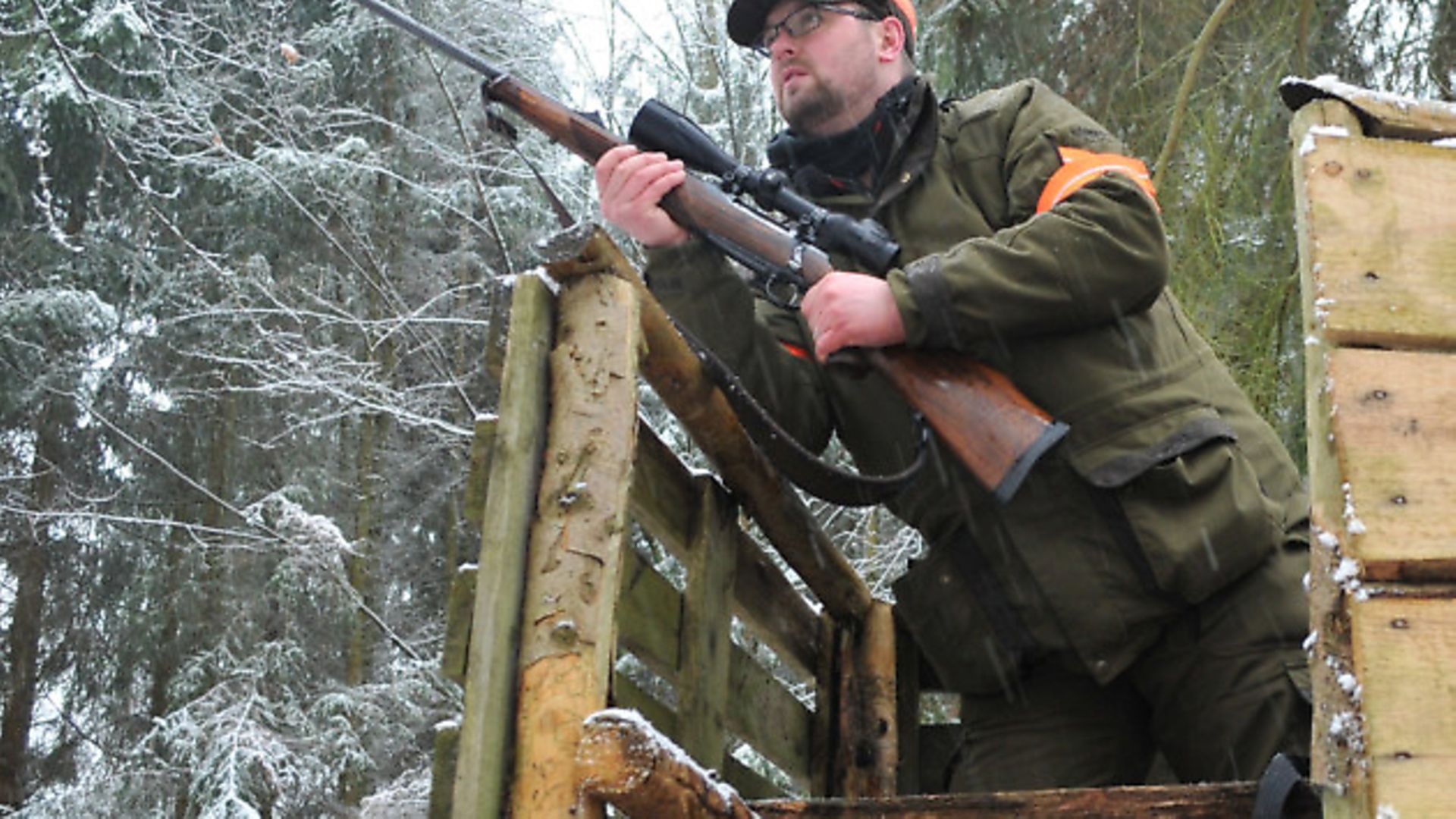 credit: Archant
credit: Archant
Good hunting practice with Scott Blaney
Wild pigs are probably the most sought after quarry species in Europe today for the rifle shooter. They are intelligent, robust and, although plentiful, a very wary species on the whole. Through hunting pressure they have developed into a mainly nocturnal species in many areas of mainland Europe. How do we best hunt this species of formidable quarry?
The main methods are as follows:
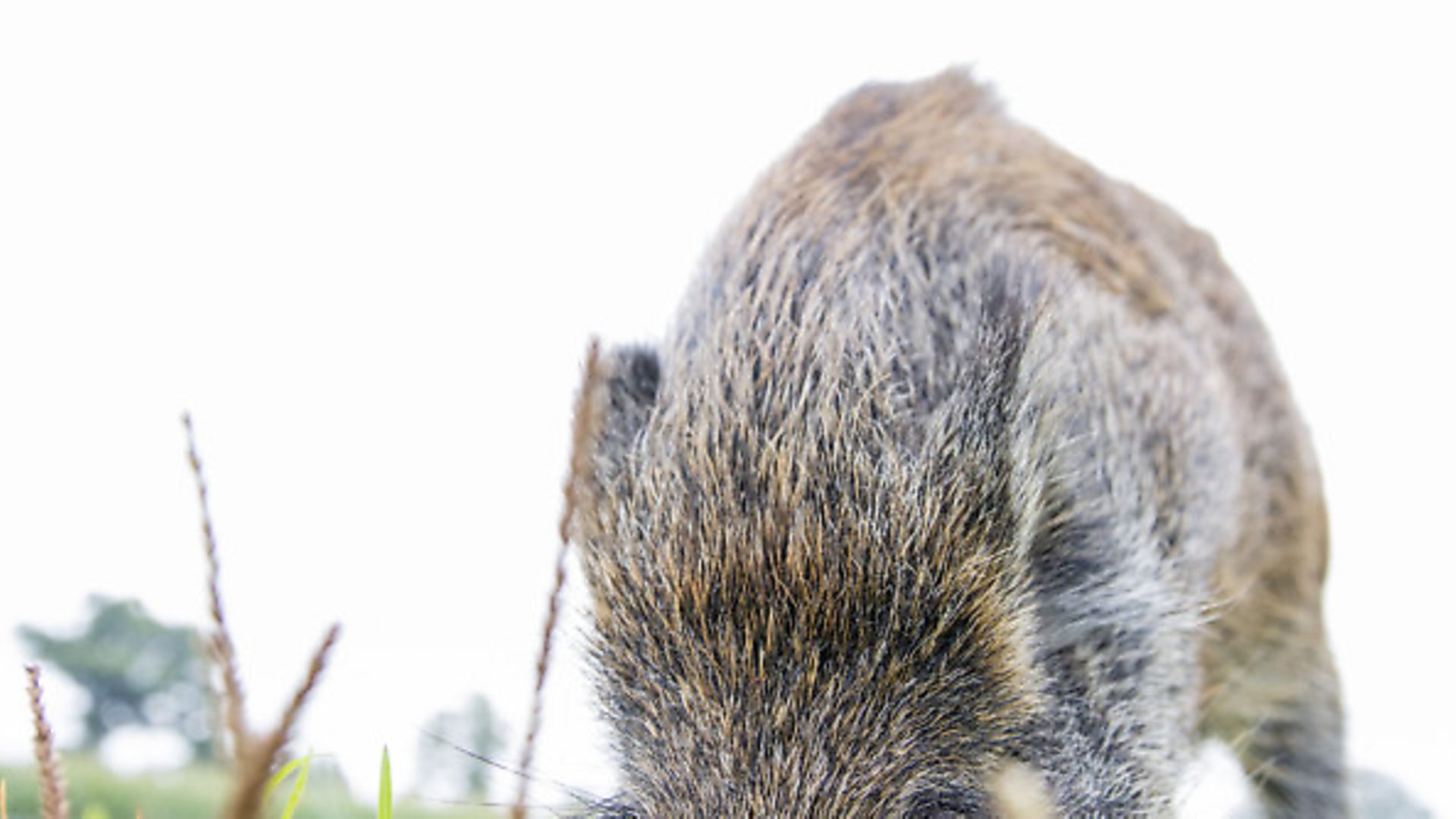 credit: Archant
credit: Archant
* The high seat: This has all sorts of advantages. Firstly, we are in an elevated position, which for the majority of occasions will provide us with a safe backstop for a shot. We have a further field of view than would be the case at ground level, and we can look down into longer grass etc. to identify quarry. (Which pig to remove from a sounder is of critical importance to wild pig management). Another distinct advantage is that we can place our seats on known pig routes, and even set up feeding stations in strategically good shooting areas overlooked by a seat. This allows us to enter the seat before the pigs move and sit very quietly in ambush.
* Driven hunts: The more popular method in autumn and winter as the vegetation dies down is driven hunting. The populations of pig are exploding in Europe and this type of hunt has become a critical part of the management scheme. To become a proficient driven pig hunter you need to practice shooting moving targets on the range. Fast quarry identification is also essential with this type of hunt.
* Stalking: Wild pig can naturally also be stalked in the correct circumstances. Their eyesight is not good but they will very quickly pickup on anything abnormal within their environment. Their sense of smell and hearing is excellent, so awareness of wind direction and very careful stalking are required if a successful outcome is to be achieved. Unlike most deer, pigs are very robust. They can take a really hard hitting shot and still flee. It is not abnormal for heart and lung shot pig to run a considerable distance, and if possible seek dense cover before succumbing to the shot. Consequently, getting in as close as possible and delivering a shot that expels as much energy as possible into the target is essential.
Shot placement
We know from Dr Krüger’s article which pigs we should and shouldn’t be culling, so we will move straight onto shot placement. When stalking or high seat shooting it is best to wait for a static shot. The boiler room shot, as with all mammals, will result in massive and catastrophic damage to the heart and lungs. Although lethal, the pig may run on, however a good blood trail is almost guaranteed. Pigs have a short stubby neck and a large head, so head and neck shots are far easier than on deer, where the whole target can move very quickly on its long neck. A well placed shot to the base of the ear results in a beast that drops in its tracks, with zero meat damage.
Caliber
Here in Germany – I use this example because I live here and know the laws – a bullet diameter of no less than 6.5mm, delivering no less than 2,000 joules of energy at 100 meters is required as the legal minimum to engage pig. My personal experience is that moving up to the .30 caliber is a more reliable tool of choice, with many hunters here favoring the 8mm and 9mm bullets types. I shoot, for the most part, a .308 Winchester, but if carrying out follow up on wild pigs I like to have my 9.3X62. The reason for this is that wounded pigs head for the thickest cover they can find, and when approached will charge you at the last moment; for me, this is the moment when I want to know for sure that I can put that pig down, and that he will stay down. Wounded pigs can be very dangerous. As such, follow up on wounded pigs must be very structured and generally involve a dog handler. Both him and the dog will be very well trained, and are very much in charge at this point. Follow up is always done at dawn, as opposed to night time, because of the danger that wounded pigs can present. You as the shooter are generally obliged to be a part of this follow up team, and will be instructed exactly as to what is expected of you and what your role in this activity is.